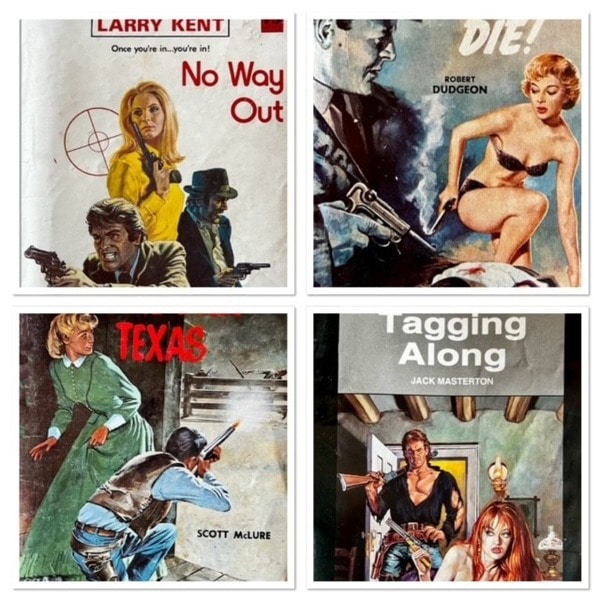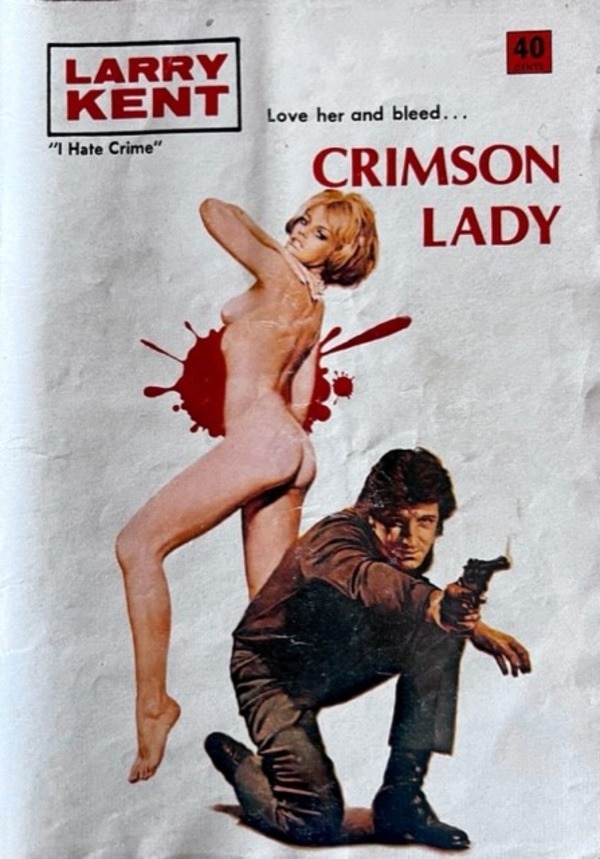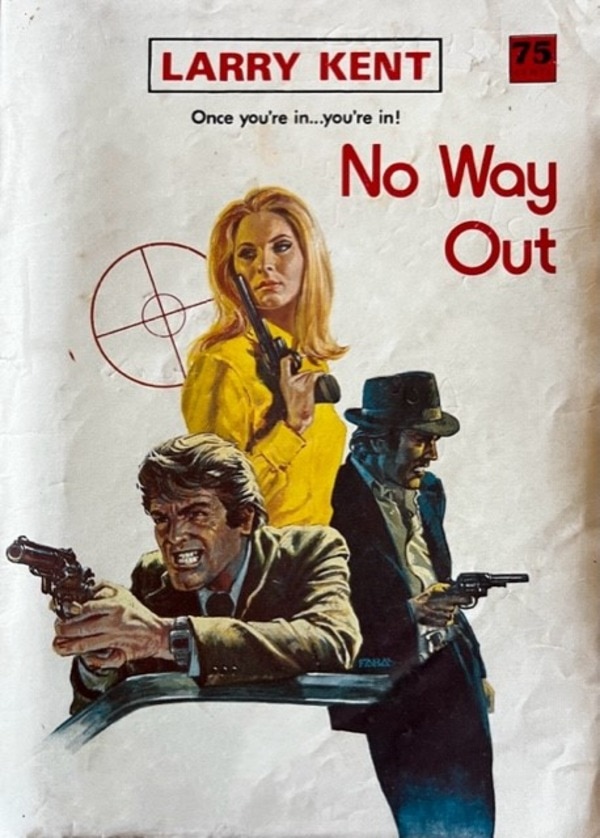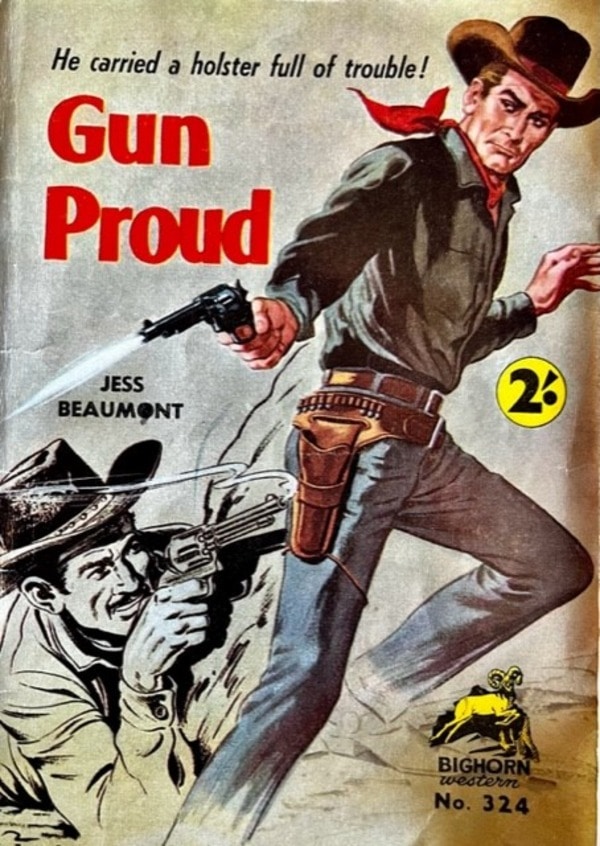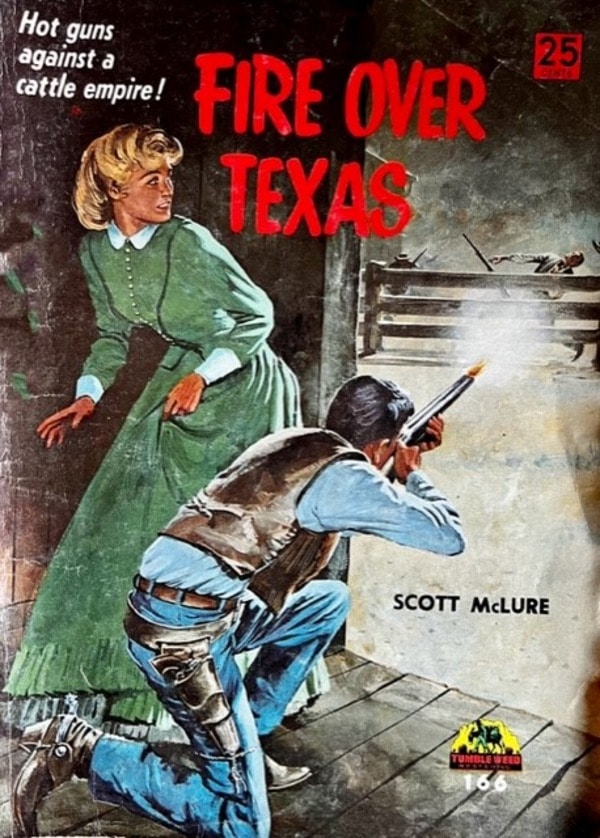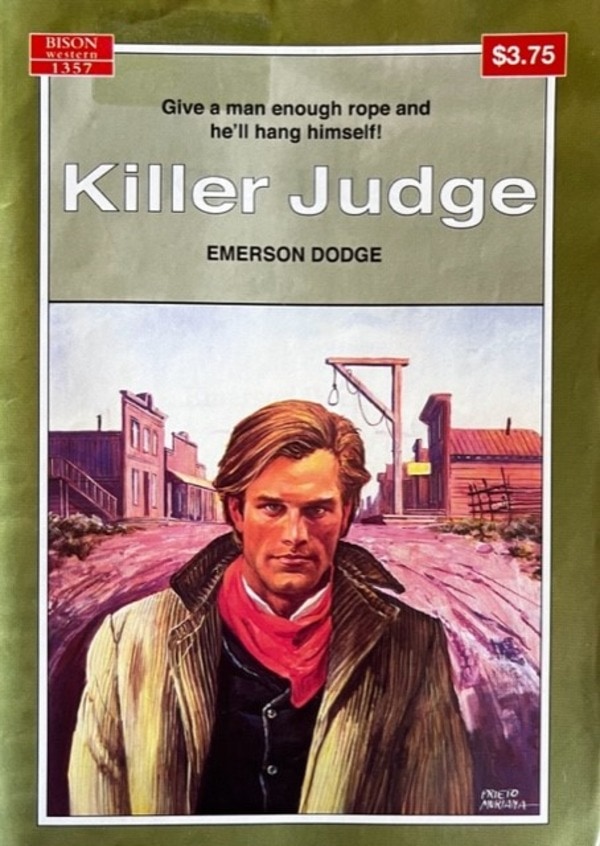TRASHY TUESDAY – AUSTRALIAN PULP: CLEVELAND DIGESTS AND BOOKS
Cleveland Publishing was established in 1953 and continued publishing soft cover digests, primarily westerns, up until December 2018. Cleveland published in a range of different genres, including romance, spy fiction and the Larry Kent crime series.
The Larry Kent series, along with the endless supply of westerns, was one of the main sources of income for Cleveland from 1954 and until 1983. The soft digests were originally based on the Sydney radio show ‘I Hate Crime’, about an American reporter, Larry Kent, who moved to Australia and set himself up as crime busting private investigator. The novelettes (around 50 pages) and digest books (which were under a hundred pages each) moved the hard drinking, tough talking Kent to New York, but kept the ‘I Hate Crime’ tagline on most of the covers. Published by Cleveland Publications, the Larry Kent books were a rival to Carter Brown and were churned out each month, with most being written by Don Haring.
As I have previously highlighted, the Australian Larry Kent digests went through several revamps over their nearly thirty year run. The changes were most notable on the covers, which evolved from the nicely stylised artistic efforts by Walter Stackpool in the 1950s and early 1960s, through to the stereotyped, more routine covers of the mid 1960s, which typically featured semi-naked or bikini-clad young women. In the late 1960s/early 1970s this changed again when the Spanish syndicated art agency Nova Bossa started providing a lot of covers for Cleveland, including those for the Larry Kent books. These were generalised action covers, which were used across the world, most commonly in Germany for the Kommissar X series, and then re-used in Australia on the Larry Kent books. The covers were drawn by a number of well respected Spanish illustrators and comic book artists, including Rafael Cortiella, Josep Maria Miralles and Enrich Torres. These Spanish covers were typically more violent and sexualised in their approach than the previous covers, and often used tropes and actors from popular movies. (see my earlier article: https://murdermayhemandlongdogs.com/trashy-tuesday-more-larry-kent-spanish-covers/)
The two Larry Kent digests I recently acquired were from 1974 and 1976, as far as I can tell (Cleveland never included publication dates), and both were graced by Spanish designed covers.
The artist for Crimson Lady (Larry Kent #749, Cleveland, 1974?) is not credited but it is fairly typical of the syndicated Spanish covers done during this period. A bit more risqué than the usual Kent cover, it contains the almost obligatory cover elements of alluring woman, gunfire, blood and a male figure, who looks a bit like Charles Bronson (the Spanish artists shamelessly used images of popular actors on most of their covers), holding a gun.
The cover for No Way Out, (Larry Kent #818, Cleveland, 1976?), is done by Salvador Faba (1936), one of the many Spanish artists who churned out covers for the Spanish art and comic syndicates. Faba is probably best known for his horror and western art, including the German covers for Vampira, and his artwork is featured on several Larry Kent and Cleveland western covers. The one for No Way Out is quite striking, with plenty of guns, and is very similar to those done by other Spanish artists such as Rafael Cortiella and Fernando Fernandez.
Here is a link to other Larry Kent covers by Faba: https://murdermayhemandlongdogs.com/trashy-tuesday-more-larry-kent-spanish-covers/
In addition to the Larry Kent books, Cleveland also experimented with other American based crime novels, but these were usually short lived.
Wake Up And Die is part of the Max Strong Private Eye series by Robert Dudgeon, pseudonym for Frank S. Greenop, who wrote westerns and crime novels under various names for Cleveland. The Max Strong series mainly featured in digest form in the mid 1950s, and Wake Up And Die was the only one to be published as a paperback in Cleveland’s Cougar series.
The cover art is uncredited, but is probably either Stan Pitt or Walter Stockpool, who did thousands of covers between them. It is very typical of 1950s book covers, with the usual bikini clad girl, dead body, sinister figure and a very smoking gun.
Frank S. Greenop also wrote numerous westerns under a variety of names, inlcuding Jess Beaumont. Gun Proud is one of his early efforts and was probably published around 1955. It was one of the early entries in Cleveland’s Bighorn Western series.
At its peak Cleveland had several different western series; including Sierra Western, High Brand Western, Bighorn Western and Winchester Western, to name a few. They produced around 18 different westerns each month and printed up to 50,000 copies of each book.
The early covers were mainly done by Stanley Pitt, who really captured the feel of 1950s westerns.
Cleveland published digest westerns between 1954 and 2018, and the changing nature of their covers over the period is an interesting mirror of how the western genre, including movies, evolved over that time. The early Stan Pitt covers were relatively tame and innocent, compared to the later Spanish influenced ones, and reflected the tone of popular western movies in the late 1950s. Images of movie stars, such as John Wayne and Gary Cooper, often found their way onto the covers and the moral tone of the movies is readily reflected in the covers. However, as the western movie became grittier and more violent from the late 1960s and early 1970s, the covers, now not usually done by Stan Pitt, also began to change.
This evolving nature of the covers into something more salacious and violent is most clearly reflected in the changing depiction of women over the period. In the early Stan Pitt covers, women, when they appeared, were almost always fully dressed and wearing buttoned up dresses, or blouses and long skirts. This certainly changed, however, by the 1970s, by which time the level of nudity was increasing and the clothing was often well worn. This can be seen in the below cover for Tagging Along from sometime in the late 1970s or early 1980s.
Other examples can be seen in my earlier articles here: https://murdermayhemandlongdogs.com/trashy-tuesday-a-very-early-cleveland-western/
The artist of the cover for Tagging Along by Jack Masterton, (Cleveland Western, #2761, No Date), is not credited, but was mostly likely one of the many syndicated Spanish artists. As a side note, clothing on western covers became much less resilient as the decades went by!
One of the many western artists used by the Nova Bossa art agency for its westerns was Prieto Muriana, who did several covers for Cleveland westerns and the Larry Kent books. Muriana often focused on a close up of a single figure, trying to draw out their character, as can be seen in the two covers below.
He was, however, also capable of doing quite dramatic covers as can be seen here: https://murdermayhemandlongdogs.com/trashy-tuesday-more-cleveland-western-covers/
Although Cleveland’s output was almost completely dismissed by critics and others over the length of its existence, they were a major source of popular culture in Australia, particularly in the 1950s to the 1970s and the books, and their covers, hold up an interesting mirror to Australian society during that time.


